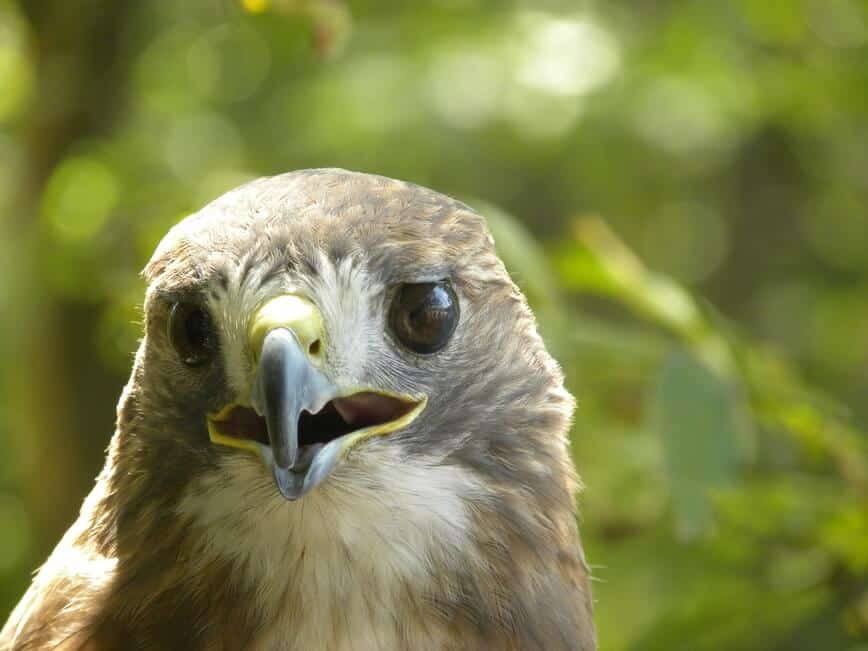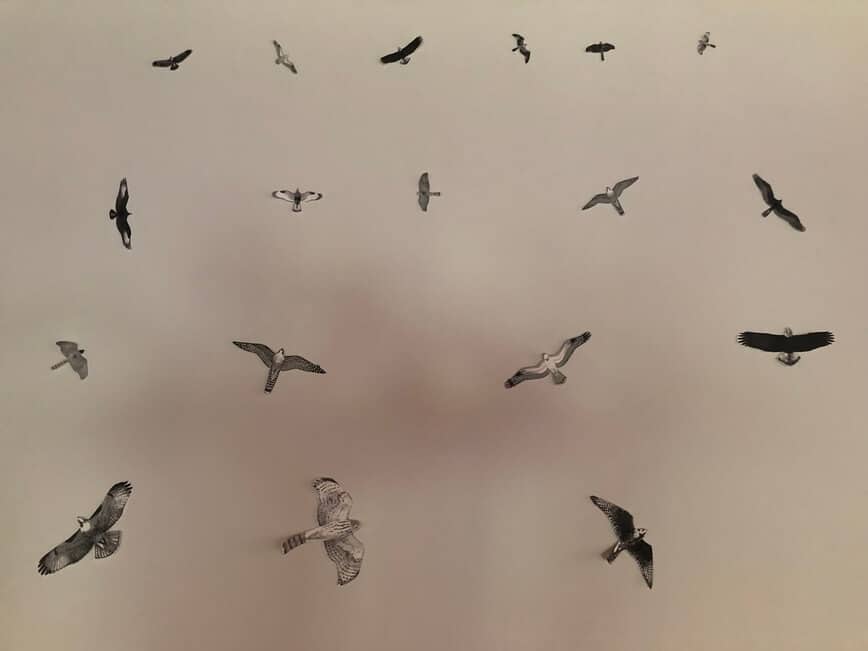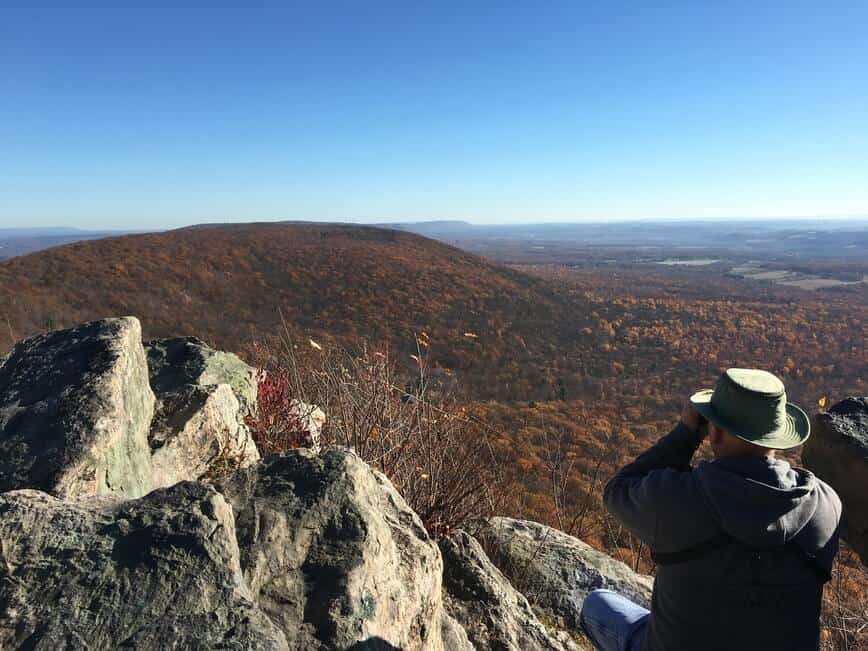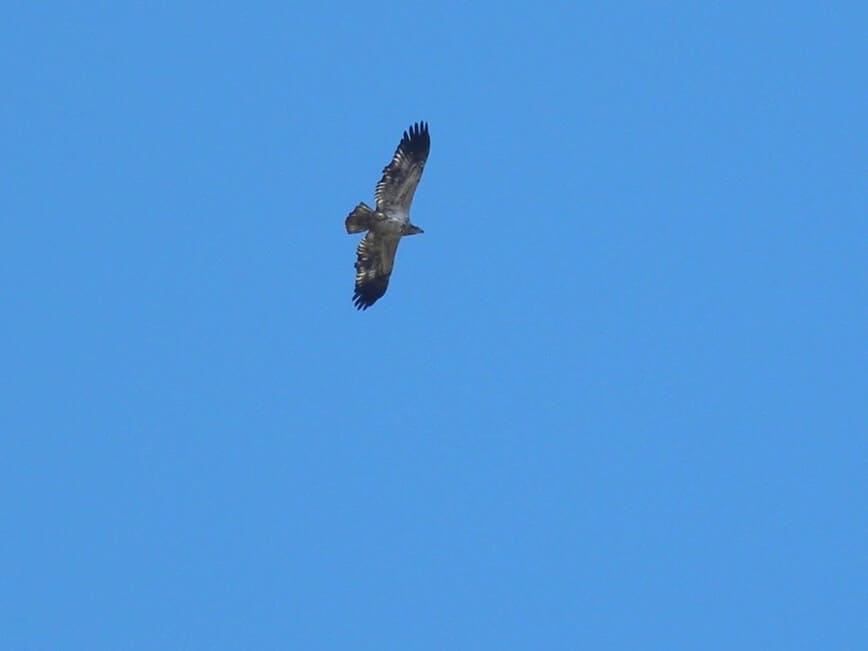
Every fall, when the leaves slowly start changing, until the trees are bare, an incredible aerial spectacle happens in our area, which does not have many comparable sites in the world. The raptor migration.
Right here in the northeast US, these majestic birds - which include eagles, vultures, buteos, falcons, accipiters, and more - travel southbound along mountain ridges and shorelines, and are highly visible from certain sites.
Luckily, there’s probably a hawk watch site within an hour driving distance from where you live and there are a huge amount of excellent resources on the internet.
Watching hawks can be a transcendent experience. What starts out as a little dark spot on the horizon can turn into a huge Bald Eagle flying by your observation point.
Raptors in our area migrate because of food. The days up north are getting shorter, plants stop producing and either die or become dormant, and small mammals are switching to their cached food or even go into hibernation. Ponds and lakes freeze over and make its inhabitants inaccessible. Food is becoming scarce.
But migrating is time and energy consuming. To minimize loss of energy, different birds of prey have developed different migration strategies. The most common one is by finding thermals. Thermals develop over land in the morning when the ground warms up. Mountainsides heat up quicker than valleys and therefore are good places for a thermal to develop. Once a bird finds a thermal, it stays in this rising column of air until it’s gained enough altitude to leave the thermal and trade height for distance...until the cycle starts all over again. This strategy can move a raptor for a hundred miles without flapping its wings once. Eagles and hawks are really good at this.
One of the most eye-popping spectacles is a so-called kettle of hundreds of Broad-winged Hawks (Buteo platypterus) rising together in a thermal until they become tiny specks in the sky and then leaving the thermal to start streaming southbound. And they’d better be good at it, as their migration is up to 4,500 miles each way!
Winds increase later in the fall. One of the most efficient travel techniques for raptors during this time of year is by using updrafts created by wind hitting mountain ridges. Strong westerly winds on sunny days can get birds very close to your vantage point. This is especially true the day after a cold front has moved through.

As a beginner, you might just want to enjoy watching “the big boys” fly by. But I bet that in no time, you’ll want to be able to identify them. Luckily, there are always some experienced hawk watchers at these sites, who are more than happy to help you with that.
They will point out the different bird shapes from a distance; the different flight styles when they get closer; and finally, when the birds get really close, the different field marks.

It helps if you have a pair of binoculars, but even if you don’t, you’ll still have a great time. My personal favorite spot is an outcropping of rocks along the Appalachian Mountains about 1.5 miles west of Bake Oven Knob. Even the walk up there can be really interesting. Raptor migration also happens to coincide with our songbird migration, so while hiking to your lookout, look out for the little ones. And if you’re really lucky, you might also spot a Ruffed Grouse (Bonasa umbellus) or a porcupine.
But before you head out, I put together some links to prime you for your next (or first) outing.
Probably the most famous hawk watch site in the northeastern US and the world’s first raptor sanctuary is Hawk Mountain Sanctuary. It’s worth the drive to be able to spend some time in the visitor center, then walk the trail to the lookout. Their ten-year average is 17,200 birds each fall!
If you live closer to the shore than the mountains, Cape May Hawkwatch, nicknamed “The Raptor Capital of North America” is the way to go.
An excellent resource to bring with you in the field is "A Guide for Hawks Seen in the Northeast." It’s a two-page free download or printout for your personal use.
Once you get seriously bitten by the raptor bug and you really want to dive deep, “Hawks in Flight” by Dunne, Sibley, and Sutton and “Hawks from Every Angle” by Jerry Liguori are real gems.
To find the location closest to you, head over to Hawk Migration Association of North America's Raptor Migration Database.
More general birding resources can be found here.
Please, head out, look up, and be amazed to witness one of the largest, visible animal migrations on our planet and share your experience with us!
Some random facts about raptors from Audubon.org
- Before bringing prey to its mate or young, a male Sharp-shinned Hawk will tear off the head and eat it.
- A Bald Eagle nest discovered in St. Petersburg, Florida was more than 9 feet in diameter and 20 feet high. Another nest in Vermilion, Ohio was formed like a wine goblet and weighed nearly two metric tons. Eagles used the nest for 34 years before the tree toppled in the wind.
- The Peregrine Falcon inhabits all continents except Antarctica.
- Hear the scream of a Bald Eagle in a movie? That’s actually the call of a Red-tailed Hawk. Hollywood most often uses the hawk’s shrill cry as a stand-in for the eagle’s high-pitched whistles.
- A Cooper’s Hawk will catch a smaller bird with its feet and repeatedly squeeze the prey until it's dead. They’ve also been known to hold a bird underwater until it drowns.
- Hunting Peregrine Falcons dive at more than 200 miles per hour.
- Red-shouldered Hawks are born target shooters. By the time they are five days old, nestlings can fire their feces over the edge of the nest.
- Caribou bones and sticks have been found in nests made by Rough-legged Hawks.
- Some raptors “cache” food. One Gyrfalcon (pronounced “JER-falcon”) was seen using a frosty dead ptarmigan like a spear of Brazilian BBQ, chipping off hunks of meat to eat as it waited out winter in the Aleutian Islands.
- Swainson’s Hawks go the distance - migrating more than 6,000 miles from Canada to Argentina - in as little as two months, averaging 124 miles per day.
Love birds? Read more of Erich’s articles about birds:
- Go Birding - Open Your Eyes to a New World of Inspiration
- How Birds Use Colors and Patterns to Attract Mates and Avoid Predators
- 1,000 Songs for Free! No Smartphone Required
- A Shorebird in the Forest? Meet the American Woodcock
- On the Wing – The Magic of Bird Migration
- Ducks, Gulls, Feathers, Feet, and Freezing Temperatures
- Great Horned Owls Lay Eggs in February in the Northeastern US?
Do you love watching hawks & birding? Let us know in the comments below!
Do your friends enjoy great bird articles too? Share this article with them and let us know what you all think by commenting below!
Tag your photos with #maplewoodroad on social media and share them on our Facebook page! Have any questions about this recipe? Ask on our Maplewood Road Community Facebook page and I’ll be happy to help.
Subscribe to our weekly newsletter for more great articles!


